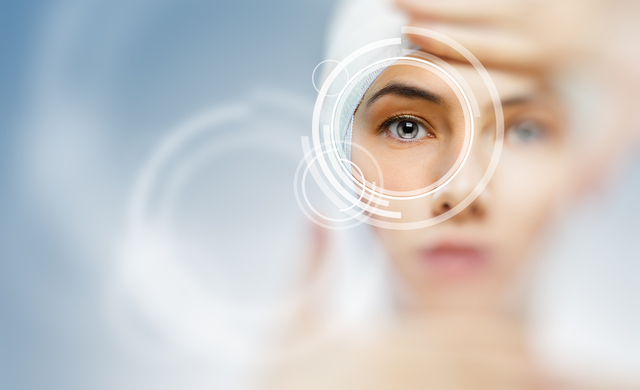As more and more individuals switch from glasses to contact lenses, understanding the impact of various lens types on eye health has become paramount.
The ability to change and manipulate one’s vision through a nearly invisible device that provides unobstructed peripheral vision is indeed appealing.
However, with the variety of contact lens choices available today, selecting the appropriate type for your lifestyle and eye health can be challenging.
Among these options, weekly disposable contact lenses have been gaining popularity. This article explores the effectiveness of these lenses in maintaining eye health.
Why Weekly Disposable Contact Lenses?

Weekly disposable contact lenses are a middle ground between daily disposable and monthly lenses, balancing the benefits of both types.
They’re designed to be replaced every one to two weeks, offering the convenience of extended wear without the increased risk of infections associated with longer-wear lenses.
Like daily disposable lenses, weekly disposables can help to reduce the buildup of deposits such as proteins and lipids, which can cause discomfort and potentially lead to complications like corneal ulcers.
By replacing the lenses regularly, users maintain a clean lens environment that promotes better eye health.
However, they offer more cost-effectiveness than daily lenses, as fewer lenses are required for the same duration.
Acuvue Oasys with Hydraclear Plus
Among the weekly disposable lenses, Acuvue Oasys with Hydraclear Plus from Johnson & Johnson has set a benchmark.
The lenses incorporate Hydraclear Plus technology, a wetting agent blended into the lens material to help maintain a high level of moisture for comfort throughout the wearing period.
This wetting agent keeps the lens surface smooth and slick, reducing friction against the eyelid and providing a sensation akin to not wearing any lenses at all for many users.
These lenses are crafted from a silicone hydrogel material, permitting a high level of oxygen to reach the eyes and keep the corneas healthy, preventing hypoxia—a condition resulting from insufficient oxygen that can lead to discomfort and potentially serious complications.
Everclear PLUS
Another noteworthy product in the weekly disposable category is Everclear PLUS. Made from a high-water-content hydrogel material, these lenses provide long-lasting hydration for increased comfort.
They also offer UV protection, which is a beneficial feature, especially for those spending a significant time outdoors.
Similar to Acuvue Oasys, Everclear PLUS lenses are designed to maximize oxygen permeability, ensuring your corneas receive adequate oxygen to maintain health and comfort. The combined benefits of superior hydration and oxygen permeability make Everclear PL
Practices for Optimal Eye Health

While weekly disposable lenses contribute significantly to maintaining eye health, the wearer’s habits also play a crucial role. Practicing good lens hygiene is essential.
Always wash your hands before handling lenses and ensure that the storage case is regularly cleaned and dried.
It is also important to use fresh lens solution every time the lenses are stored and never to reuse or top up old solution, as this can encourage the growth of harmful bacteria.
The importance of adhering to the replacement schedule suggested by one’s eye care professional cannot be overstated.
When contact lenses are worn longer than recommended, the risks of eye complications significantly increase.
Over-wearing contact lenses is a common practice, but it’s one that can bring about serious implications for eye health.
One of the primary risks of wearing lenses beyond their intended period is the increased chance of infections.
These can range from minor irritations to severe conditions such as keratitis, an inflammation of the cornea that can potentially lead to vision loss if not treated promptly.
The surface of a contact lens is a potential habitat for harmful bacteria and fungi, and the longer the lens is worn, the higher the risk of these organisms causing an infection.
In addition to the risk of infections, over-wearing contact lenses can also lead to a condition known as corneal neovascularization.
This occurs when the cornea, the eye’s clear front surface, doesn’t get sufficient oxygen. As a result, the eye may respond by growing new blood vessels into the cornea to compensate for the oxygen deficiency.
This situation is not just uncomfortable, causing red, irritated eyes, but it can also impair vision if the new vessels obstruct the line of sight. It can also make the eye more susceptible to inflammation and infection.
Furthermore, the overuse of contact lenses can cause a buildup of proteins and lipids, which can scratch the cornea and cause discomfort or blurry vision.
Over time, these scratches can make the eyes more susceptible to infections, adding to the risks already associated with over-wearing.
In general, the importance of adhering to the contact lens replacement schedule should be regarded as a cornerstone of good ocular health.
In doing so, users can enjoy the benefits of contact lenses while minimizing the potential risks to their vision and overall eye health.
The design and materials used in weekly disposable contact lenses help to optimize eye health by minimizing complications associated with contact lens wear.
Their regular replacement schedule reduces the risk of deposit buildup, and the use of silicone hydrogel enhances oxygen permeability.
However, it is vital to remember that individual eye health also depends on proper lens care and usage habits.
Therefore, in addition to selecting the right lenses, maintaining a consistent lens care routine and regular eye check-ups are also essential in preserving one’s eye health.
As vision technology continues to evolve, weekly disposable lenses represent a valuable option, merging the convenience, comfort, and eye health considerations that modern contact lens users seek.

Jean Smith is a fitness enthusiast and blogger who focuses on fitness and a healthy lifestyle. She is passionate about assisting people in living healthier lifestyles and is constantly on the lookout for new and creative methods to stay fit and healthy. Her articles are excellent resources for anyone interested in improving their health and fitness.
